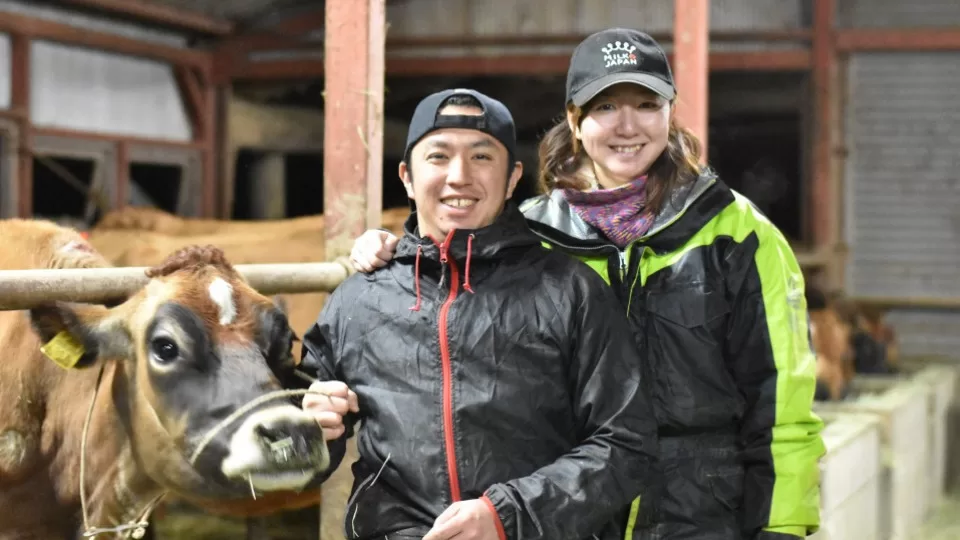The history of agriculture in most western nations follows the same pattern. Humans on the European continent domesticated the aurochs early on in their evolution and eventually produced the dairy cow. Agriculture was the chief means of subsistence for most people until the current era, in which fewer and fewer people are involved with livestock. America was founded on rhetoric that celebrated the farmer above all other occupations, but urbanization in contemporary times has moved citizens to the cities and forced farming into the background of the national consciousness. In the simple equation, becoming modern has meant having less farmers.
The same, however, is not true for one ancient nation on the other side of the globe.
Japan was a feudal society during much of its long-storied past. Emperor Mutsuhito, eventually taking the name Meiji (meaning “enlightened rule”), took the throne in 1868 and began to radically westernize the country to give it a more advantageous standing in the world. He took a Japan that was purposely closed off from outside influence for centuries and encouraged his citizens to change the way they lived, dressed and thought. He strengthened both the military and the education system, and copied the West in everything from ship-building to haircuts. Instead of a loss of traditional culture, most Japanese appeared to welcome the change as an embrace of modernity.
Part of Japan’s revolution was the introduction of dairy products into the diet. The first known habitation of the Japanese archipelago was 30,000 BC, but the first dairy cows didn’t arrive until 1727 (and there was only three). The Meiji government promoted the nutritious value of milk, and after studying dairy farming from the Danish, set up the nation’s first milk processing plant. Previously, because of its rarity, milk was only available to royalty. Now, all levels of society had access to it. Part of proving to the West that Japan was now an equal was drinking milk as they did.
Milk consumption further increased due to the First Sino-Japanese War with China (1894–1895) and later the Russo-Japanese War (1904–05) because injured soldiers were given milk to drink. The dairy industry wasn’t truly established, however, until after World War II with the introduction of school lunches. At first students were given powered milk donated from overseas, but as the national dairy herd increased soon the meals included fresh bottled milk. Also after the war, Japan experienced two decades of rapid economic growth that resulted in the importation of diverse types of American and European dairy products, further increasing the country’s desire for them.
By 1963 there were over 400,000 dairy farms on the island, although the average herd size was only 2.7 cows. Like any agricultural nation at the onset, they started small and simple. Since then, however, Japan experienced what might be one of the most rapid developments of a dairy industry ever, swiftly increasing herd sizes and now boasting a national output on par with major European nations and one of the highest milk-per-cow yields in the world. The achievement of this development is made further impressive by a consideration of how small and densely populated is the archipelago. While many farms are found on the less-inhabited northern island Hokkaido, others are located on the outskirts of cities or in narrow valleys between mountains. Today there approximately 20,000 dairy farms with an average herd size of 73 cows. One of the reasons for the consolidation in the industry is that many farms are left without successors, as more of the younger generation moved into urban areas following the country’s economic development.
The lack of the arable land remains one of the industry’s greatest challenges, as it means that much of the grain and fodder must be imported, and the cost of production remains high. Nonetheless, even though dairy farming is not part of the traditional culture of Japan, the government highly values its farms and the food security they offer. Their farmgate pricing system more resembles that of Iceland, in which farmers receive a subsidy and a voluntary quota system is enacted that 97% of farmers participate in. Because of the high costs involved in producing milk in Japan, the farmers would not be able to fair well on the international market against countries such as Australia and New Zealand. As a result, the dairy industry is one of the major reasons Japan refuses in participate in the Trans-Pacific Partnership, which would force them to reduce tariffs on imports.
For most developed nations, a deep tie with agriculture is becoming increasingly a mark of the past. Not only ago, however, Japan decided to make it an important part of its future. Milk, both directly and indirectly, became part of the nation’s plan to improve its self-standing in the world. As a result, dairy farming thrived in one of the mostly unlikely places. Because it has become an important part of Japan’s new identity, all indication is that it will continue to do so.
This article is part of The Milk House Column series, published in print across three countries and two languages. It can also be found at themilkhouse.org.
This article appeared in a similar form in Progressive Dairyman.
Looking for a way to pass the evening? Check out this article on 10 Farms Movies from Around the World.
(Photo source: https://bit.ly/39p79od)


